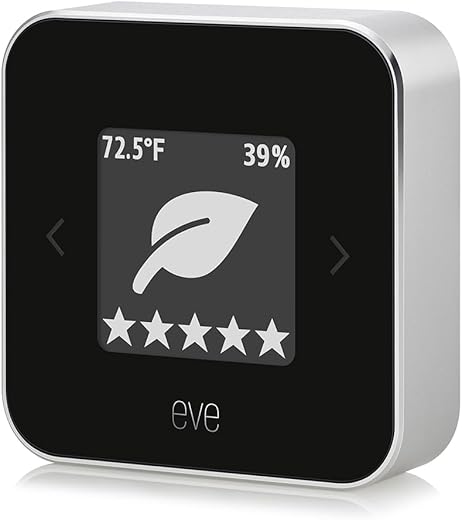Welcome to the World of Organic Beauty!
Discover the empowering journey of crafting your own organic makeup. This beginner’s guide will walk you through the essential steps to create beautiful, natural cosmetics right at home. Unleash your creativity and join the movement towards healthier, sustainable beauty choices today!
Gather Your Organic Arsenal
Step 1: Understanding the Basics of Organic Ingredients
Why Go Organic? Your Skin Will Thank You!Explore the advantages of organic ingredients in your makeup. Organic materials are free from harmful pesticides and synthetic chemicals, making them gentler on your skin. You’ll find that organic options often contain vitamins and nutrients that nourish your skin, enhancing its health while you wear makeup.
Recognize the benefits for your environment. By choosing organic, you contribute to sustainable agricultural practices that preserve biodiversity and reduce pollution. For instance, organic farming techniques promote soil health and minimize water usage, essential for our planet’s future.
Familiarize yourself with common organic ingredients. Look for ingredients like:
Understand certifications. Read labels carefully. Look for products certified as organic by recognized bodies, ensuring that what you’re using meets high standards.
Experiment with different combinations. Try mixing a few basic organic ingredients to see how they perform on your skin. This hands-on experience will deepen your understanding and prepare you for crafting your own makeup in upcoming steps. Start collecting organic ingredients and jot down your favorites—your journey into organic beauty is just beginning!
Step 2: Essential Ingredients for Your Makeup Creations
The Magic Mix: What Should You Stock Up On?Identify the key ingredients for your organic makeup. Understanding the properties of each ingredient empowers you to create effective formulations for items like foundations, lip balms, and eyeshadows. Here’s a breakdown of essential components you’ll need:
Select high-quality ingredients. Look for organic certification and sustainable sourcing. Always test on a small skin patch to avoid allergic reactions. Collect your ingredients and prepare them for your DIY creations—your organic makeup adventure is about to get exciting!
Step 3: Crafting Your First Organic Product: Lip Balm
Kiss Toxicity Goodbye: A Simple Recipe for BeginnersFollow this simple guide to create your very first organic product: lip balm. This easy recipe will boost your confidence and introduce you to the formulation process while keeping your lips hydrated and healthy.
Gather Your Ingredients:
Instructions:
Melt the Wax: In a double boiler, combine the beeswax, coconut oil, and shea butter. Heat them over medium-low until fully melted, stirring occasionally until smooth.
Add Essential Oils: Remove from heat and let the mixture cool slightly. If desired, incorporate a few drops of your chosen essential oil for aroma.
Pour Into Containers: Carefully pour the melted mixture into your prepared containers. Be cautious as it may be hot!
Let Cool: Allow the lip balm to cool completely, which typically takes about 30 minutes. This will solidify your balm and create a smooth texture.
Label Your Creation: If you’d like, label your containers with the date and ingredients used, turning your DIY process into a fun keepsake!
Use your homemade lip balm whenever your lips need moisture. Not only will you enjoy a product free from harmful chemicals, but you’ll also gain confidence in your ability to create your own organic makeup!
Step 4: Creating a Natural Foundation That Matches Your Skin
Flawless and Fearless: Custom-Made Coverage!Craft a customizable organic foundation that perfectly matches your skin tone. This is an exciting opportunity to blend different natural pigments and oils, resulting in coverage that enhances your beauty without harmful chemicals.
Gather Your Ingredients:
Instructions:
Prepare Your Base: In a bowl, combine 2 tablespoons of your chosen carrier oil with 1 tablespoon of beeswax. Melt gently in a double boiler until completely blended.
Adjust the Color: Gradually add your selected mica powder, starting with 1 teaspoon and mixing well. For additional warmth, add a pinch of cacao powder. Mix until you achieve your desired shade.
Test on Skin: Apply a small amount to your jawline. The right match will disappear into your skin. Adjust the color as necessary by adding more pigment.
Finalize the Mixture: Once you’re satisfied, let the mixture cool slightly and pour it into a small jar or container.
Store Properly: Allow it to cool completely and store it in a cool, dark place.
Enjoy your new organic foundation! Use it daily for a natural look that feels good on your skin. This customizable approach not only matches your unique skin tone but also empowers you to experiment with your beauty routine.
Step 5: Experimenting with Color: DIY Eyeshadow and Blush
Color Your World: Unleash Your Inner Artist!Get creative by making your own eyeshadows and blush using natural pigments. This step encourages experimentation with colors while teaching you how to mix and match for unique shades, perfect for any occasion.
Gather Your Ingredients:
Instructions:
Choose a Color Palette: Start by selecting a few mica powders that inspire you. For a blush, consider soft pinks and peaches; for eyeshadow, go bold with blues, greens, or metallics.
Mix the Pigments: In a small bowl, combine 1 teaspoon of your chosen mica powder with 1/2 teaspoon of your binding agent. For example, mix a shimmering gold mica with shea butter for a radiant highlighter.
Test the Shade: Dab a bit of the mixture onto your wrist to see how the color appears on your skin. Adjust the proportions as desired, adding more pigment for intensity or binding agent for creaminess.
Store Your Creation: Once satisfied with your color, transfer the mixture into your container. If you made both eyeshadow and blush, label each pot clearly.
Apply and Enjoy: Use your fingers or a brush to apply the product, blending it seamlessly onto your cheeks or eyelids for a fresh, natural look.
Dive into the art of color mixing and develop a collection of unique shades tailored to your style. Each creation not only reflects your creativity but ensures a safe and organic beauty experience!
Your Organic Makeup Journey Begins!
Congratulations! You’re now equipped to create your own organic makeup. Embrace your creativity and enjoy the benefits of natural beauty while knowing exactly what’s on your skin. Don’t hesitate to try out your new skills, and share your results with others—your unique creations await!



I’m not too into makeup, but I love the idea of organic products! Can I use these recipes for other purposes like skincare? 🤔
Absolutely, Oliver! Many ingredients overlap between makeup and skincare. Just be mindful of the colorants!
Yes! The lip balm is great for dry skin, and you can use some of the oils as moisturizers.
This guide seems good, but I’m a bit skeptical about the whole DIY makeup thing. Are the results really worth it? I mean, can I actually get a decent foundation that doesn’t look like a clay mask? 😂
Totally get it, Brian! It’s all about finding the right recipe and technique. Practice makes perfect!
I thought the same, but once I got the hang of it, my foundation looked super natural! Just keep tweaking it.
I love the idea of making my own makeup, but is it really as easy as it looks? I’m worried I’ll mess up the formulations. Any tips for beginners?
Definitely don’t stress! Just have fun with it. If it doesn’t turn out perfect, you can always try again.
And watch tutorials! They can really help you visualize the process.
It can be super easy! Just follow the steps closely and don’t be afraid to adjust to your liking.
Just started diving into organic makeup, and this guide is a lifesaver! 🌿 I can’t believe how simple the lip balm recipe is. I’m excited to try it this weekend! Just curious, do you think essential oils are a must for the lip balm, or can I skip them?
I think essential oils are fun! They can give your lip balm a lovely flavor too. Just be careful with the amounts, some can be strong!
Hey Emily! Essential oils add a nice scent and some benefits, but they’re totally optional! You can make a great lip balm without them.
Wow, this is exactly what I needed! I’ve been trying to switch to organic products, but I didn’t know where to start. The eyeshadow section sounds super fun! Can’t wait to experiment. 😍 Anyone else tried making their own eyeshadow yet?
I tried making eyeshadow last week! It turned out a bit crumbly, but the colors were pretty. Just keep practicing!
So glad you found it helpful, Mia! The eyeshadow is a fun project. Just play around with colors!
I had the same issue! A little coconut oil can help bind it together better.
Cool guide! I have no idea about makeup, but I’m intrigued by the natural foundation part. How do I even know if I picked the right shade for my skin tone? 🤔
You can also check out color matching videos online! They really help you understand undertones and what looks best.
Great question, James! It helps to test a bit on your jawline or wrist in natural light. Also, the guide has tips on mixing shades!
This guide rocks! I can’t wait to try making my own organic products. But what about the shelf life? How long can I keep them?
Good question! Typically, homemade products last a few months. Store them in a cool, dark place for best results.
I think using preservatives can help extend the shelf life too, but you might want to keep it natural.
Just made my first batch of lip balm, and wow, it was a disaster! 😂 The texture is all off. Any tips for getting it right next time?
You might also want to let it cool slowly or check the ratios a bit more. It takes practice!
Oops! It happens! Try adjusting the beeswax or oils to get the consistency you like.
I had that issue too! Make sure to measure everything precisely and adjust the heat.
Thanks for sharing this! I’m a bit of a beauty junkie, but organic makeup is new to me. I’m a bit overwhelmed with the ingredients list, though. Can someone simplify it? 😅
Hey Tina! Start with just a few basic ingredients like shea butter, beeswax, and a color pigment. You can always add more later!
Yup, I started simple too! Once you get comfortable, you can experiment more with the ingredients.